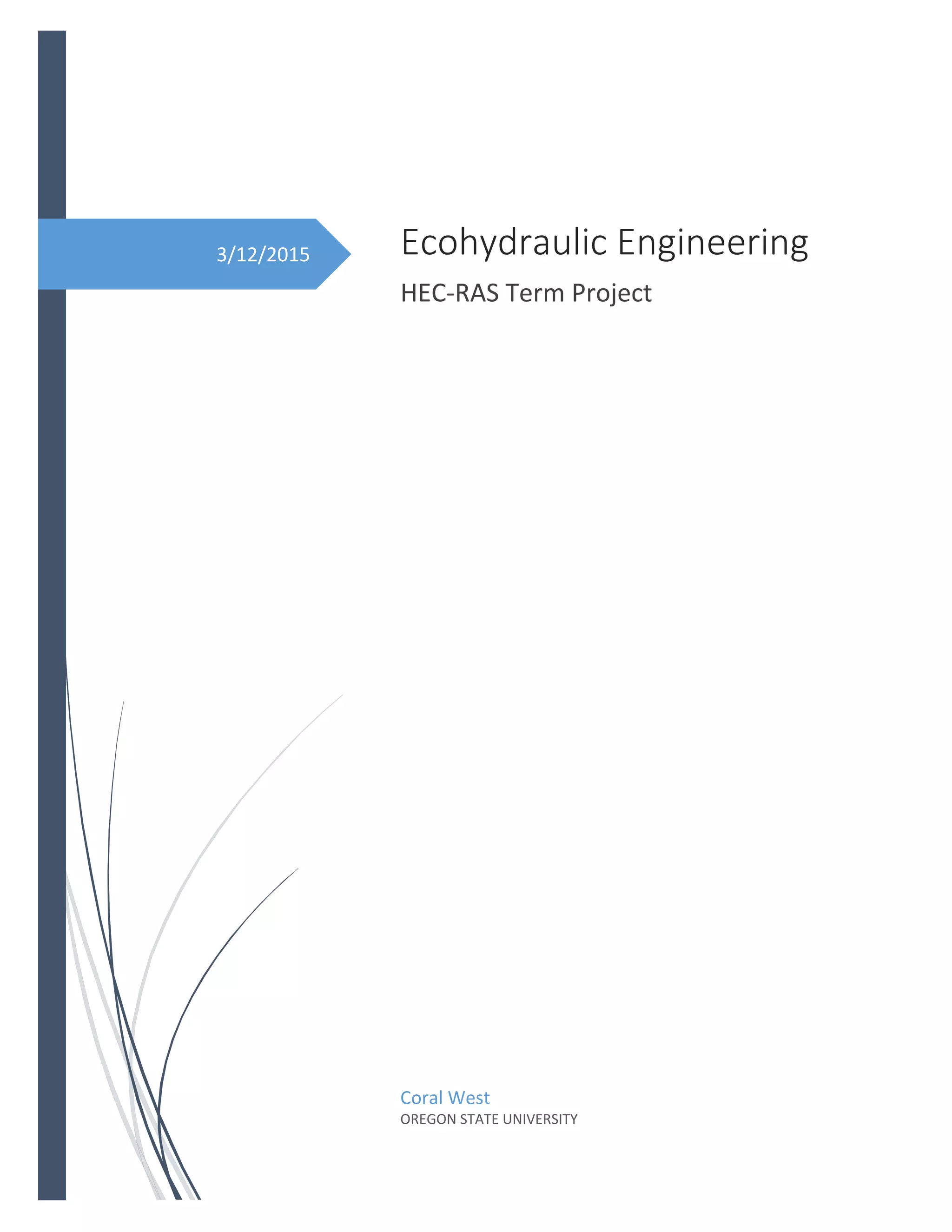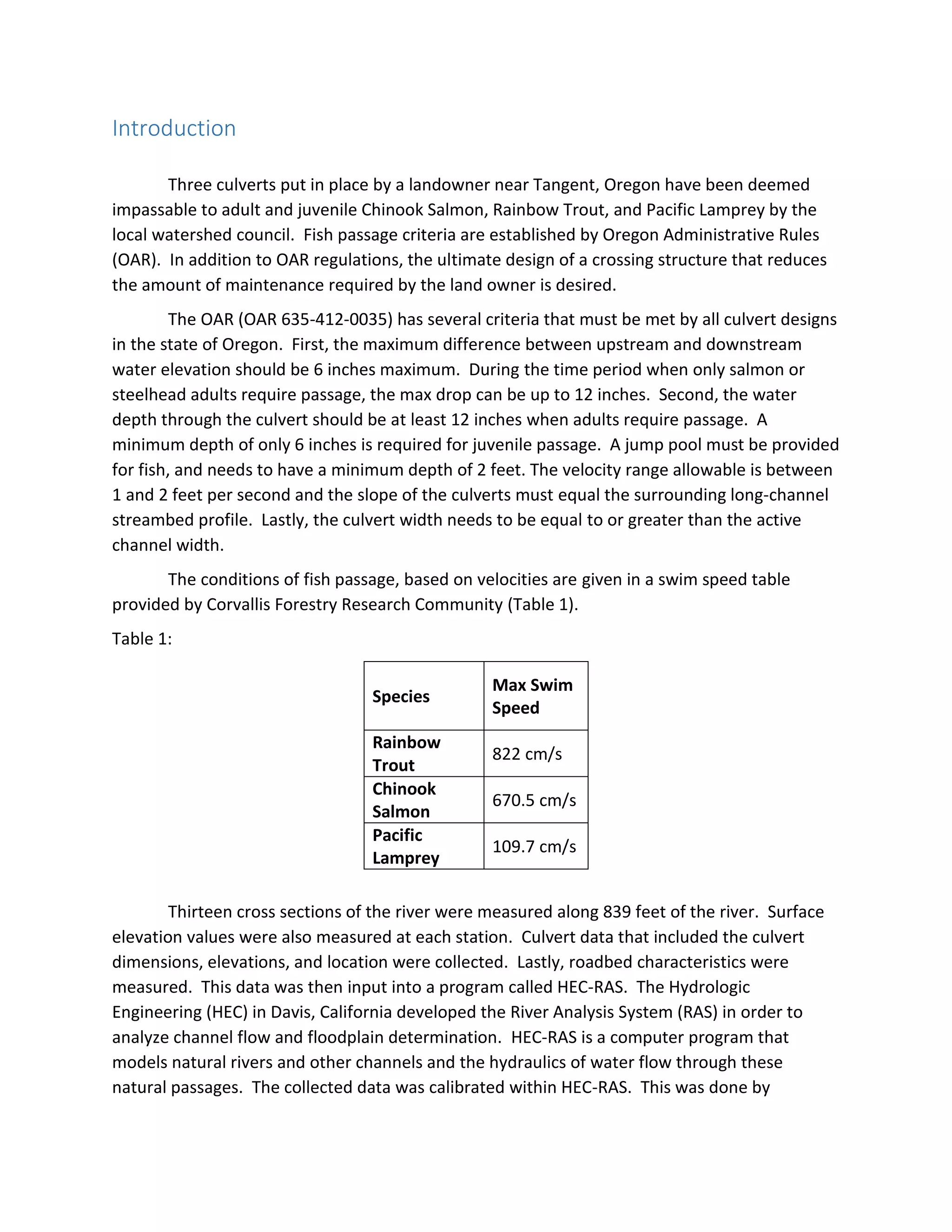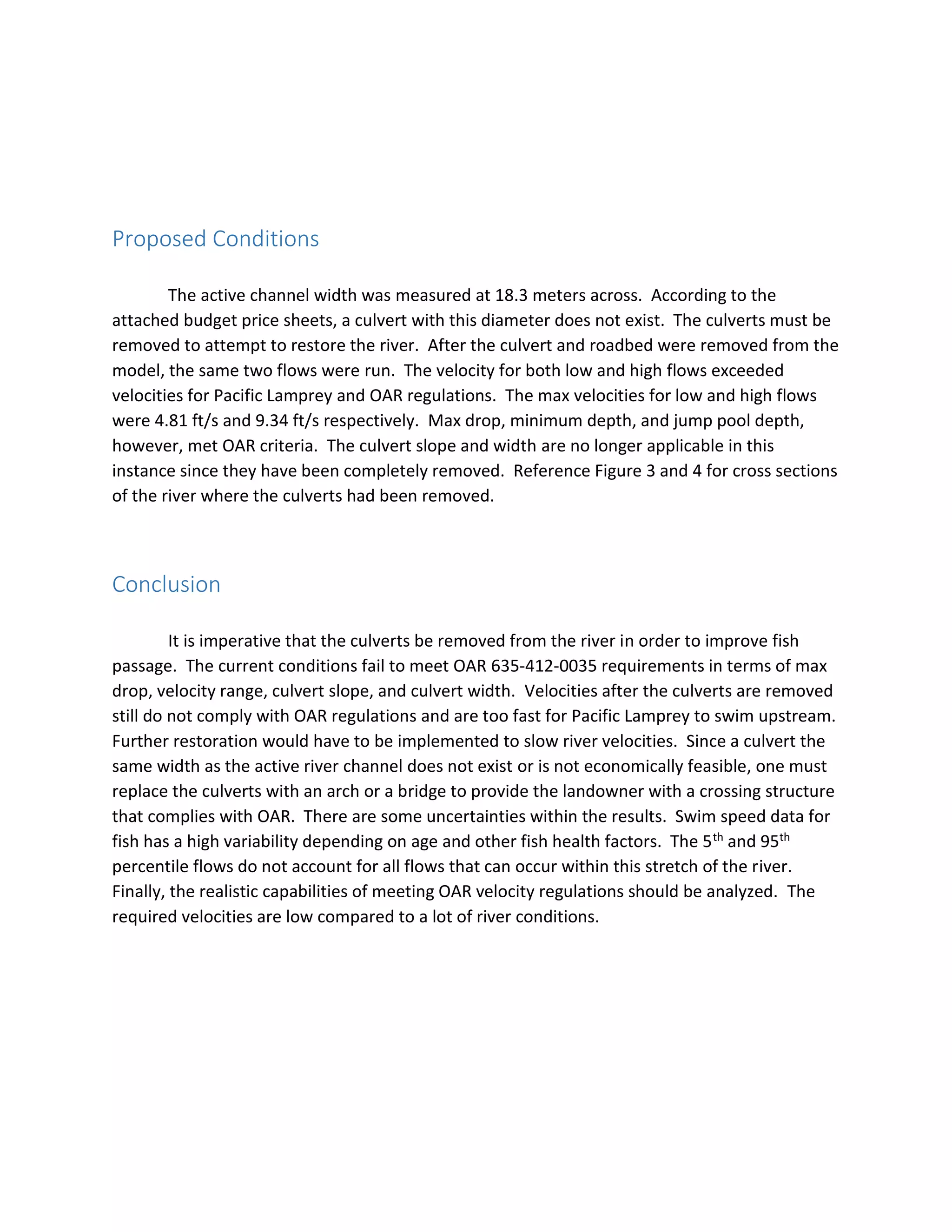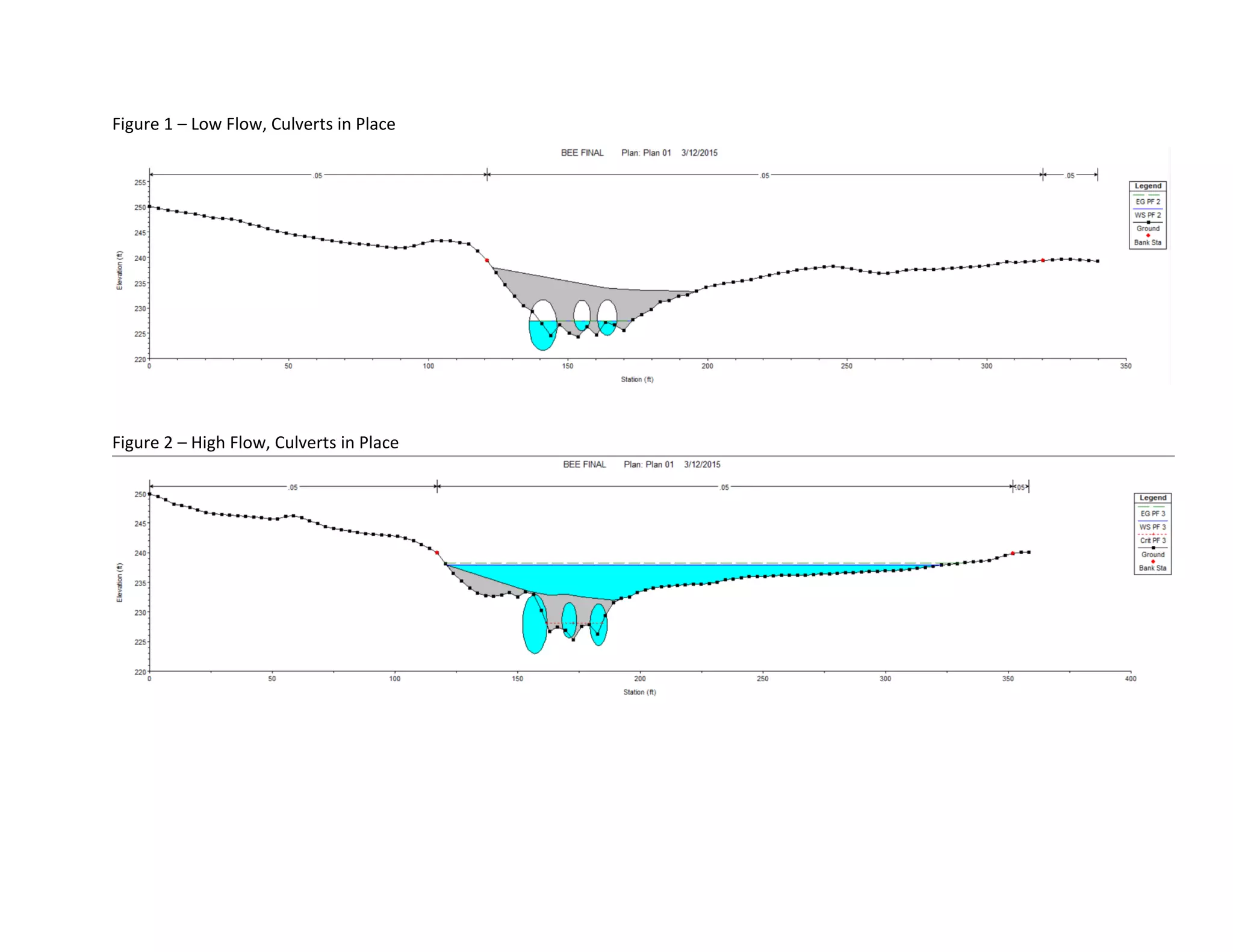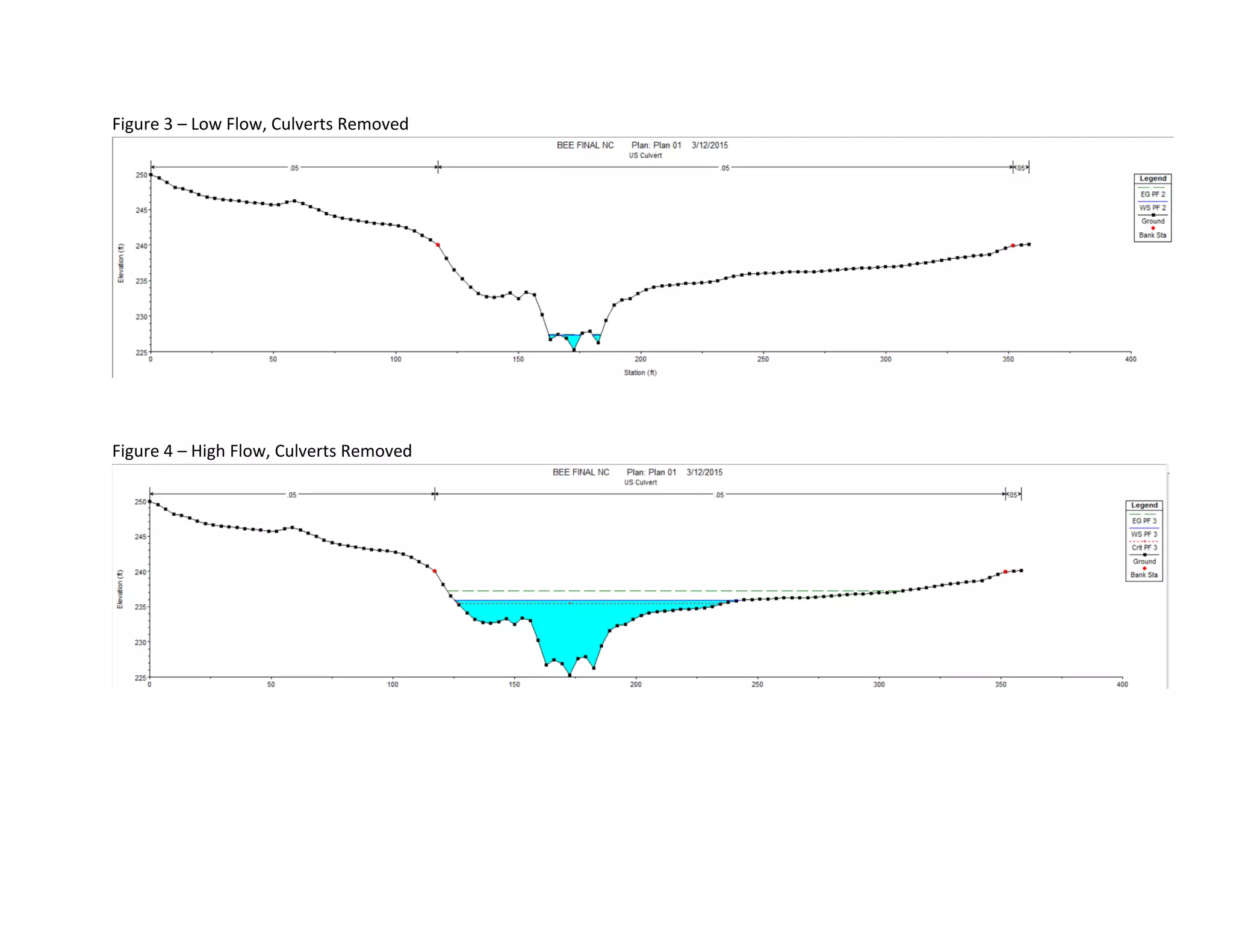The three culverts near Tangent, Oregon were deemed impassable for fish by the local watershed council. Modeling of the river section in HEC-RAS found that the existing culverts did not meet several Oregon fish passage criteria under low and high flow conditions. Velocities exceeded limits for fish, drop heights were too high, and the culverts were not a suitable width. Removing the culverts in the model improved some criteria but velocities still exceeded limits. It was concluded that the culverts must be removed and replaced with a bridge or arch structure to provide landowner access while meeting regulations.
